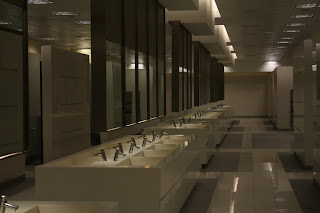Melaka is located on the Western Coast of Peninsular Malaysia facing the Straits of Melaka, about 147 kilometers from Kuala Lumpur and 245 kilometers from Singpore. Melaka is actually found sandwiched between the states of Negeri Sembilan and Johor. It can be reached by excellent roads from Kuala Lumpur and Singapore. Internally it is serviced by a very good network of roads leading to all the historical places of interest. It covers and area of 658 square kilometers and is divided into three districts namely Alor Gajah, Melaka Tengah and Jasin.
Melaka was founded by Parameswara (or Raja Iskandar) the last Malay ruler of Temasik (ancient Singapore) in 1396 when he and his followers retreated up the straits to Muar, then to Sungai Ujung before settling at Bertam near the estuary of Melaka River.
 Finding the place of strategic location, he decided to make a permanent settlement there, naming it "Melaka" after the name of the tree he leaned against. The Melaka Sultanate occupies a special position in the history of Malaysia. Its inauguration marked the beginning of the emergence of a new Malay empire. The birthplace of the Malay Sultanates and Malaysia's historic city, Melaka provided the stage on which the Portuguese, Dutch and English played out their roles in shaping the history.
Finding the place of strategic location, he decided to make a permanent settlement there, naming it "Melaka" after the name of the tree he leaned against. The Melaka Sultanate occupies a special position in the history of Malaysia. Its inauguration marked the beginning of the emergence of a new Malay empire. The birthplace of the Malay Sultanates and Malaysia's historic city, Melaka provided the stage on which the Portuguese, Dutch and English played out their roles in shaping the history.Melaka emerged as a strong maritime trading state under the industrious Parameswara and his chiefs. Melaka also began to be noticed by Muslim traders from West Asia and India, who until that period, had been concentrating their activities in Aru, Pedir and Pasai en-route to the East, especially China. Because of its strategic location straddling the Straits of Melaka, it thrived as a port-of-call and a centre of entrepot trade with ships and merchants from China, Japan, India, Arab and South Africa.
In 1511, it fell to the hands of the Portuguese, followed by the Dutch in 1641 after a fierce battle. In 1795, Melaka was given to the British to prevent it falling to the French when the Netherlands was captured during the Napoleonic Wars. It was returned to the Dutch in 1818 under the treaty of Vienna but was later exchanged by the British for Bangkahulu, Sumatra. From 1826 onwards, the British East India Company along with Singapore and Penang governed it, under the Straits Settlement administration in Calcutta.
The Dutch, who held Melaka for over a century, left many fine buildings marking their heritage. The most imposing relic of the Dutch period is the Stadthuys, a strikingly pink town hall which is today the oldest Dutch building in the Far East. Right next to it stands the bright red Christ Church, constructed with pink bricks imported from Holland and covered with local red lacerite. Today, these buildings together with the ruins of the Portuguese built A Famosa and St. Paul's Church are the most prominent reminders of the Europeans' presence in Melaka.






















































